The newly opened Israel Museum with its gallery space expanded to 58,000 sq. meters can now display a much greater number of items from its encyclopedic collection of 500,000 works of art ranging from prehistoric artifacts to installations by contemporary artists. Since the choice of what to see, and where to see it, can be overwhelming, described here are a few outstanding pieces. All of them, apart from Anish Kapoor’s sculpture, are on exhibit in the main building where entrances lead on one level to the Museum’s collections of Archeology, Jewish Art and Life, and the Fine Arts.
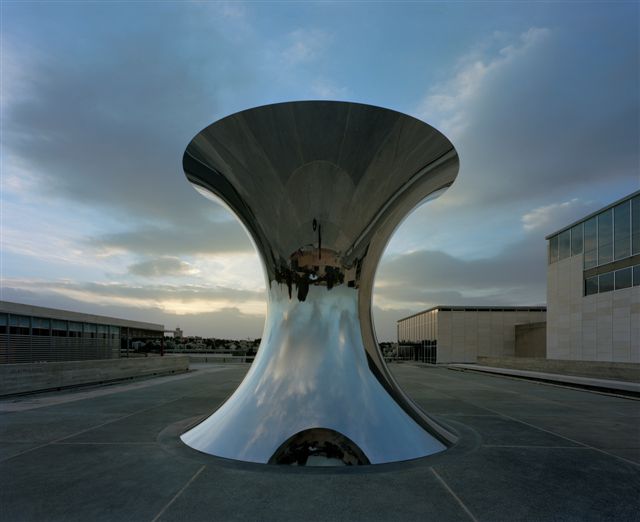
International artists Olafur Eliasson and Anish Kapoor were commissioned to create monumental works of art for the expanded campus. Eliasson’s Wherever the Rainbow Appears consists of 360 paintings representing the progression of colors in the spectrum of light visible to the human eye. It is installed on the walls of the Museum’s new covered walkway that extends from its entrance to the heart of the Museum. Turning the World Upside Down, Jerusalem, Kapoor’s five meter tall sculpture is sited on the Crown Plaza, the highest point of the campus. Its polished steel surfaces reflect and invert images of the Jerusalem sky and the terrain of the Museum, a contrast of earthly and heavenly forms evoking the mystical duality of the city. This sculpture is dedicated to the memory of the late Teddy Kollek, legendary Mayor of the city and founder of the Museum.
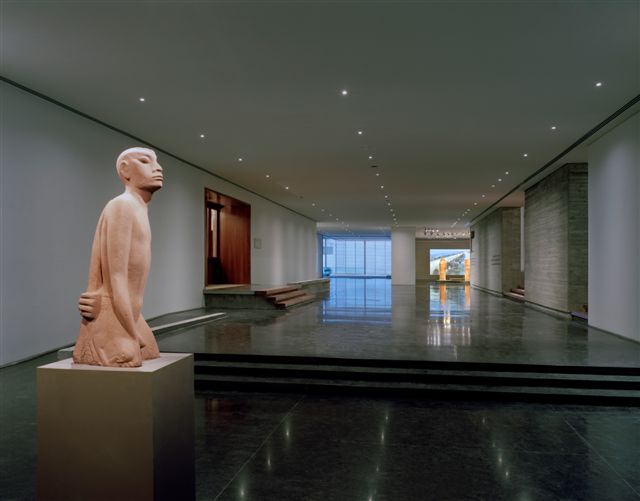
Yitzhak Danziger’s iconic statue of Nimrod is sited in the main entrance hall ‘mediating’ between the Museum’s holdings of ancient cultures and modern art. The primitive appearance of this “mighty hunter before the Lord”, a hawk on his shoulder, nude and carrying only a bow, looks back to the ancient myths and cults of this region. The same sources were mined by the ‘Canaanites’, writers and artists who came together in the early 1950s. Bent on severing ties with Europe, they sought to find inspiration in the art and culture of the ancient Near East.
Architect Richard Kauffman recommended that Nimrod be put on permanent display on the Hebrew University campus at Mount Scopus where it would (as now) symbolize the link between past and future. But protests by the religious community who saw it as an expression of heathen idolatry resulted in the idea being abandoned.
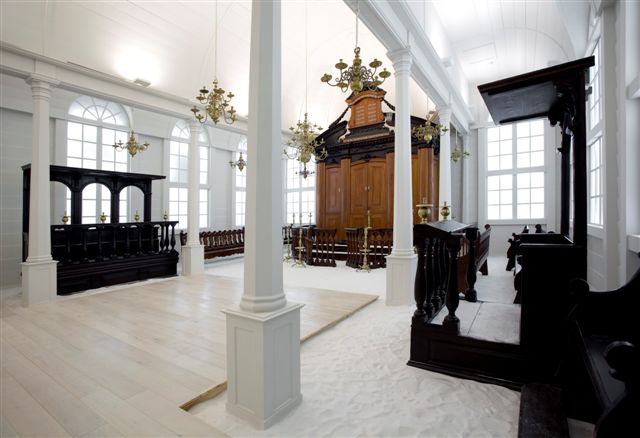
The Tzedek ve-Shalom Synagogue, Suriname, is the latest addition to the Museum’s Synagogue Route where the interiors of three other restored synagogues from Italy, Germany and India, are on display. This South American synagogue, built in 1736, ceased functioning in the 1990s, its interior, ceremonial objects and furnishings transferred to the Israel Museum ten years ago. Built by Jews who had fled Spain and Portugal during the inquisition and settled in Holland, its design was inspired by the Esnoga, the great Portuguese synagogue of Amsterdam, but it also incorporates local architectural features such as large windows, white walls and a sand-coated floor. Brass chandeliers of Dutch manufacture are suspended from the ceiling.
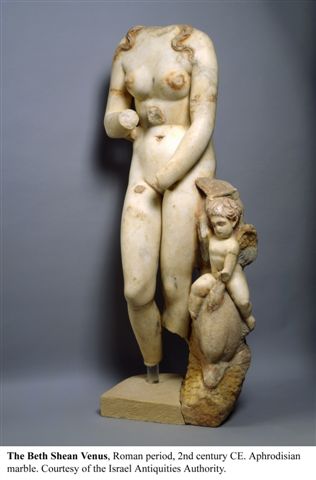
This Goddess of Love, without arms, and headless but with ringlets on her shoulders, was discovered in 1993 during an archeological dig at Beit Shean, a city which prospered in the Roman and Byzantine periods when its name was changed to Scythopolis (City of the Scythians). Alongside this beautiful figure is Eros, God of sexual love and beauty, in the form of a child riding a dolphin. Believed to have been sculpted in the town of Aprodisias (now in modern Turkey), the Beit Shean Venus is uniquely famous for its surviving coloration: red, yellow and blue paint that would have originally covered the whole figure.
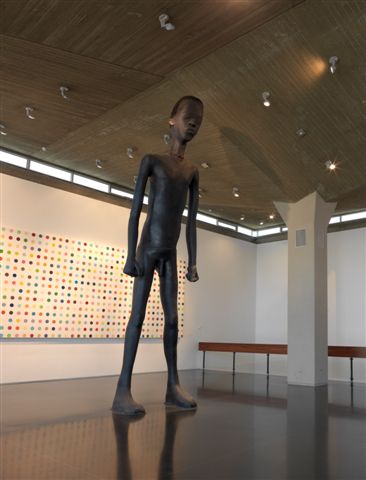
The Boy from South Tel Aviv, Ohad Meromi’s colossal sculpture dominates the new Upper Entrance Hall of the renovated Museum. It is an image that expresses the innate dignity of this African adolescent, but also serves as a reminder of the hard lives of foreign workers, a thought especially relevant this week when the deportation of their children is still under debate. This work was gifted anonymously to the Museum in honor of “Chonnikam, Elijah, Jordan, Noah, Yair, Yuval, Zara and all the children of the Middle East.”
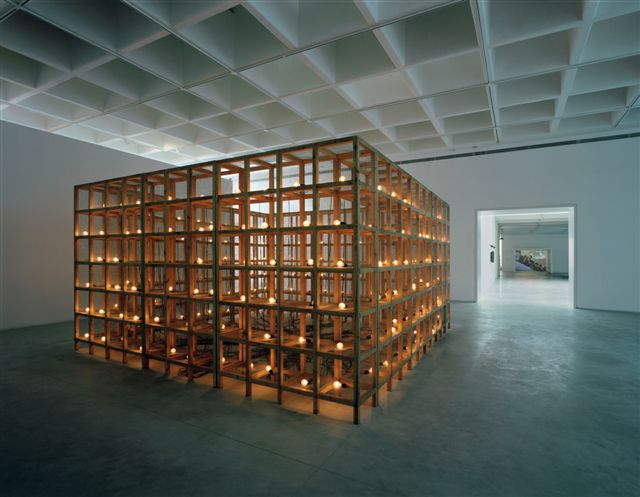
Recent acquisitions to the Museum Contemporary Art collection are brought together in an exhibition exploring the theme of movement in different artistic media. One work which is unforgettable, mainly because of its distressing connotations, is Current Disturbance by Mona Hatum, a Lebanese-born artist, resident in England since 1975. Set up in a darkened space, it consists of 240 identical wooden cages together forming a transparent cube. Each cage is lit by a light bulb wired individually to a central junction box illuminated by a light hanging from the ceiling. At random, so it seems, these lights switch on and off, the glow of the filaments increasing before being abruptly extinguished. Simultaneously, the humming sound of the current flowing into the light bulbs is amplified and then cut off. Typical of the type of work that Hatum produces which has been described as an ‘encounter between architecture and the human body,’ this installation was originally produced in San Francisco for the Capp Street Project.
ANGELA LEVINE






[…] during the museum’s three year renovation project, which culminated in the opening of the renewed Israel Museum on July 26, 2010. Yairi presents a selection of the photographs and video in “Work” – a solo […]
Comments are closed.